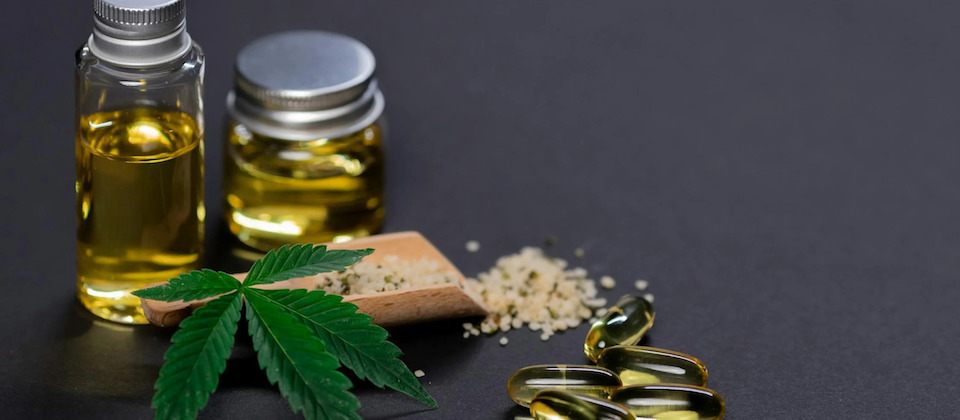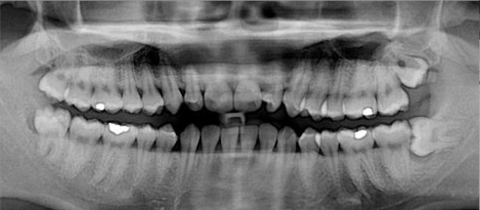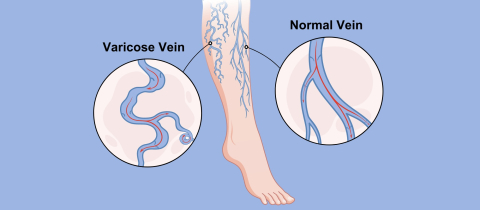Searching for CBD on the website of the SQDC returns nearly 1,000 search results. The SQDC is the Quebec-government-owned corporation responsible for selling recreational cannabis to the people. Like all plants, cannabis contains numerous naturally occurring chemicals, and one of them, cannabidiol (or CBD), has attracted a hazy halo of health benefits.
You can buy CBD soft gel capsules, and oral sprays, and oils, and dried flowers, and pre-rolled joints. You can even buy foil packets that look like astronaut food full of beets or apples or dried figs, all infused with CBD. The claims made on the website hold back on making actual promises: CBD “may” produce relaxing sensations, increase certain cognitive functions, or uplift your mood. On the rest of the Internet, where you can also buy CBD gummies and cannabis-infused chocolate, the claims reach a euphoric high, transforming CBD into a panacea able to slay insomnia, burn anxiety to a crisp, and even fight cancer.
As laws around cannabis and its derivatives loosen, interest grows and health claims bloom. People who would not be interested in getting high from smoking a joint may turn to CBD—which does not have the psychoactive action of another cannabis chemical, THC—in order to sleep better and get pain relief. After all, CBD is an approved drug and it comes from a plant, so it’s natural. Therefore, it must be both safe and effective, right?
A fog of uncertainty
A large part of the reason why cannabis has an effect on the human body is because we have what is called an endocannabinoid system. All vertebrates have one: it is a signalling system, tied to our nervous system, and it plays various roles having to do with appetite, inflammation, mood, and so much more. You can think of this system as a lock-and-key mechanism. Our bodies produce endocannabinoids which bind to specific receptors, activating them and leading to changes in the body. But these receptors can also be activated by cannabinoids made outside the body. The cannabis plant contains terpenes, flavonoids, alkaloids and, importantly, over 100 different cannabinoids. Those are the compounds that can interact with our endocannabinoid system. By far, the two best studied cannabinoids are THC and CBD. THC gets you high, while CBD… well, there is a lot of debate over exactly what CBD does.
There are a couple of CBD-containing products that have been approved as drugs for specific applications. Epidiolex is a highly purified CBD medication that is approved to treat seizures associated with Dravet syndrome (a rare type of childhood epilepsy), Lennox-Gastaut syndrome (a different form of epilepsy), and tuberous sclerosis complex (a genetic disorder that leads to the growth of non-cancerous tumours). There is also Sativex, an equal mixture of CBD and THC, approved in some countries for symptoms of multiple sclerosis.
An umbrella review was published a few months ago that sheds light on what we know about cannabis’ potential health benefits and how sure we are of it. Individual studies can be systematically reviewed and meta-analyzed to provide an overview of what we know on the topic; this paper went one step further and is a review of the reviews on the potential benefits and risks of cannabis. Having read a large number of systematic reviews on this topic in preparation for this, I can say that their bottom line is absolutely reflective of the state of our knowledge: in studies of cannabis and its derivatives, most of what has been measured—things like pain reduction, sleep improvement, and even side effects of consuming cannabis, CBD, or THC—is supported by weak evidence. The randomized controlled trials, a gold standard in medical research, have yielded results that have low to very low certainty. And many studies end up with negative results, wherein cannabis or one of its derivatives is not helpful for the condition being studied.
When it comes to pain relief, CBD is promising, though many review articles on the topic bundle together CBD with other cannabis derivatives, which makes it hard to get an appraisal of CBD itself as a pain reliever. In this year’s umbrella review, the authors calculated that, on average, across all studies, chronic pain was reduced by 30% when patients used cannabis or one of its related derivatives (like CBD). As for CBD alone, a 2022 review of its potential to deal with pain in people who have arthritis and similar conditions admits that studies done in laboratory animals are quite promising, but that human studies are thin on the ground. A meta-analysis of studies testing if THC or CBD improves quality of life in patients with cancer or neurological diseases like multiple sclerosis arrived at a disappointing “no.”
Is CBD useful for sleep? There is suggestion that it might, based on that umbrella review, but the results vary from depending on the kind of health condition the patient had that might be causing sleep problems, and most of the studies have issues. CBD has also been studied as a way to reduce anxiety, which would also have an impact on sleep. It certainly works in rats; but when tested in humans, the studies can be a bit divorced from reality, with a single dose of CBD often being given to healthy people who are forced into a stressful situation, like public speaking. The results so far are encouraging, but the studies again are littered with drawbacks, such as small sample sizes.
Then there is multiple sclerosis, a degenerative disease of nerve cells which is often accompanied by a muscle stiffness known as spasticity. There is moderate quality evidence that cannabinoids in general—which include CBD—can decrease spasticity in people with multiple sclerosis, although studies tend to be short, which makes us less certain.
For schizophrenia, Crohn’s disease, and ulcerative colitis, the evidence is insufficient and uncertain. The use of CBD in Parkinson’s disease, as well as the use of cannabis as a whole, is encouraging, but larger, more rigorous trials are needed.
None of this is to say that CBD doesn’t work for these problems, but simply that we do not know for certain given the kinds of studies that have been published so far. If CBD were a powerful painkiller or a potent sleeping pill, though, it’s likely that it would be apparent in the research done so far. It does have its uses: Epidiolex has proven this much. But a panacea? Certainly not.
Before you decide to try CBD for yourself to see if it helps with the aches and pains of life, though, you should know that CBD, being a chemical, has risks attached to it which often go unmentioned.
How safe is it?
CBD may be thought of as innocuous because our brain loves a good appeal to nature. Cannabis is a plant, we think to ourselves, and CBD comes from this plant; therefore, it must be safe.
But CBD is a chemical, and the safety of chemicals in humans has nothing to do with whether they are natural or synthetic. Plenty of herbs used in traditional Chinese medicine cause liver damage, and if you have ever rubbed up against a poison ivy plant, you understand that plants are not always benign.
Many studies in which CBD is given to human participants report that CBD is safe and that few adverse events—meaning undesired effects following the use of CBD—were flagged. The problem is that this safety assessment usually relies on immediate effects that the participant would report. As the metabolism of CBD in the body is being better understood, researchers are pointing out concerns that would not be apparent in a clinical trial.
The Food and Drug Administration in the United States earlier this year published a review on the toxicity of CBD when taken by mouth. First of all, the amount of CBD that ends up in the blood varies a lot depending on whether or not it is taken while eating. When fasting, about 6% of the dose taken ends up in the blood; when consumed with a high-fat meal, that figure goes up to 19%. This could have an impact on the effect CBD has on the body. Second, we have seen strong evidence across multiple non-human animal species that CBD can cause problems with the male reproductive system, such as lowering the number of sperm cells which would make conception harder.
Third, there is the liver. We know that CBD taken by mouth can damage this important organ. In fact, in the trials of Epidiolex, higher-than-normal levels of liver enzymes were observed in up to 1 in 5 patients treated with the drug, and some patients had to leave the trial because of this. This is why it is recommended for patients on Epidiolex to regularly undergo blood tests for liver function. While other epilepsy medications these patients were taking may have contributed to this, the literature overall suggests that CBD on its own can harm the liver. And because of how CBD is broken down in the body, it has the potential to interact with other drugs a person is taking. This can make the levels of these drugs higher or lower in the body than they would have been without the CBD. Thus, the aura of safety around cannabidiol—derived from anecdotes, short-lived clinical trials, and its natural origin—deserves to be questioned.
None of this is to paint CBD as a useless, dangerous substance. But given that CBD is commonly portrayed as a harmless cure-all, a nuanced realignment of its perception is in order. A limited number of conditions, such as certain forms of childhood epilepsy, have been shown to benefit from CBD. A long list of other conditions show promise, but the studies so far are not all that informative. Optimal doses are unknown. And beyond the drowsiness, dry mouth, nausea, reduced appetite, and diarrhea sometimes reported as side effects, CBD can cause actual bodily harm that may not be immediately apparent, although CBD is thankfully not habit forming.
We can add to this list the fact that commercial products are not always what they seem: when tested, they often reveal different amounts of CBD and THC than what’s on the label, and they are regularly contaminated with heavy metals. Some products claim to be CBD yet contain none of it. A licensed supply tested by the government is more likely to have accurate labelling. Outside of licensed products, a group at the Mayo Clinic educating clinicians on this topic recommends looking for sellers that have quality standards, such as a Current Good Manufacturing Practices (CGMP) certification; an independent adverse event reporting program; and laboratory tests that confirm that batches of the product have very low levels of THC (usually less than 0.3%) and no pesticides or heavy metals. Because CBD is not just a medication but also a natural health product, and natural health products are poorly regulated, it’s unfortunately up to the consumer to do their due diligence. The guidance I frequently read was to “start low and go slow,” though doses lower than 300 milligrams may not be doing much.
CBD is not an all-natural cure-all; it is a drug. It should be understood as such, even when it is not regulated as such.
Take-home message:
- CBD or cannabidiol is one of the many molecules present in the cannabis plant and many claims have been made about its potential health benefits
- Most of these claims come from promising studies done in laboratory animals and studies done in humans that show unclear overall results
- The safety of CBD consumption is being questioned as more studies are conducted, and non-licensed CBD products are often contaminated with heavy metals and inaccurately labelled







